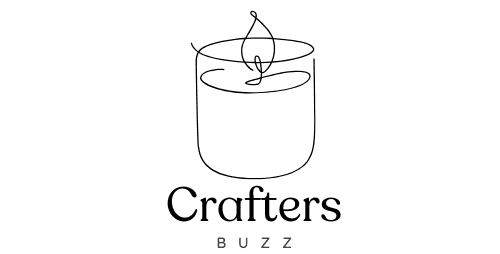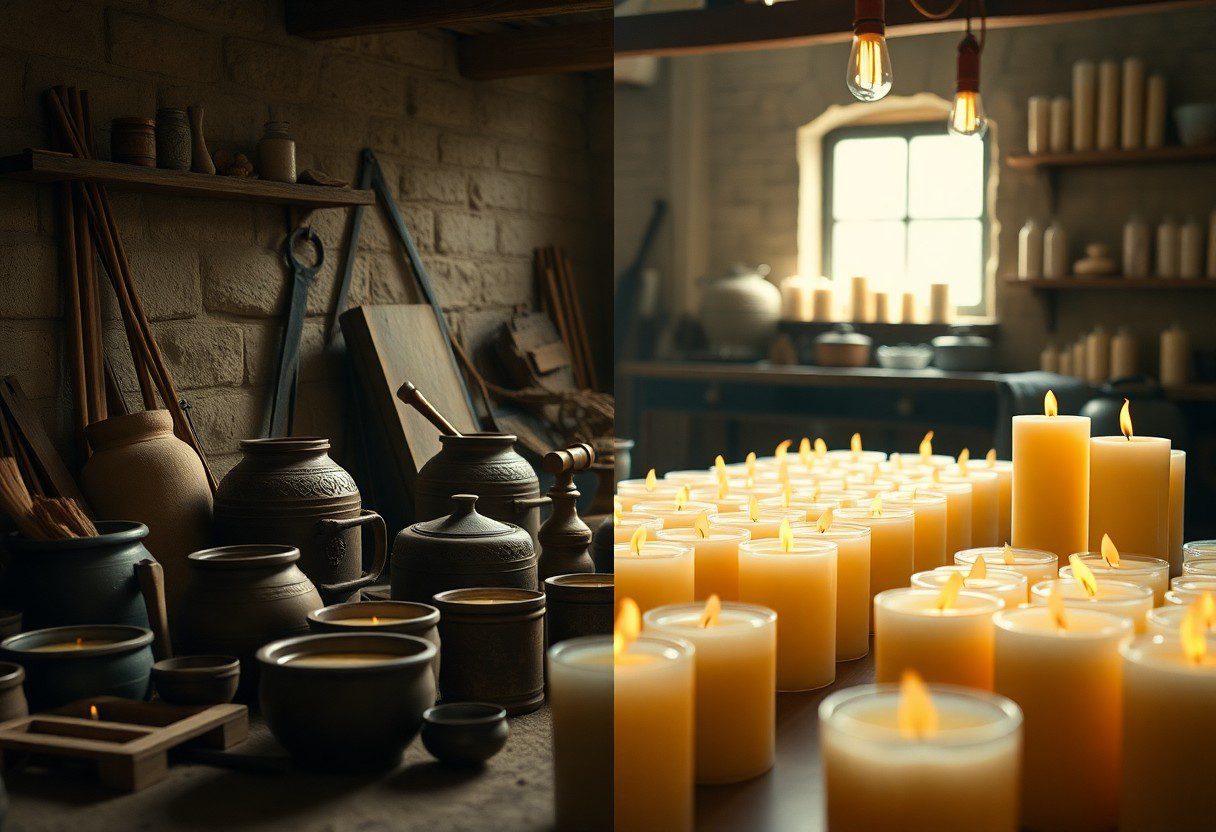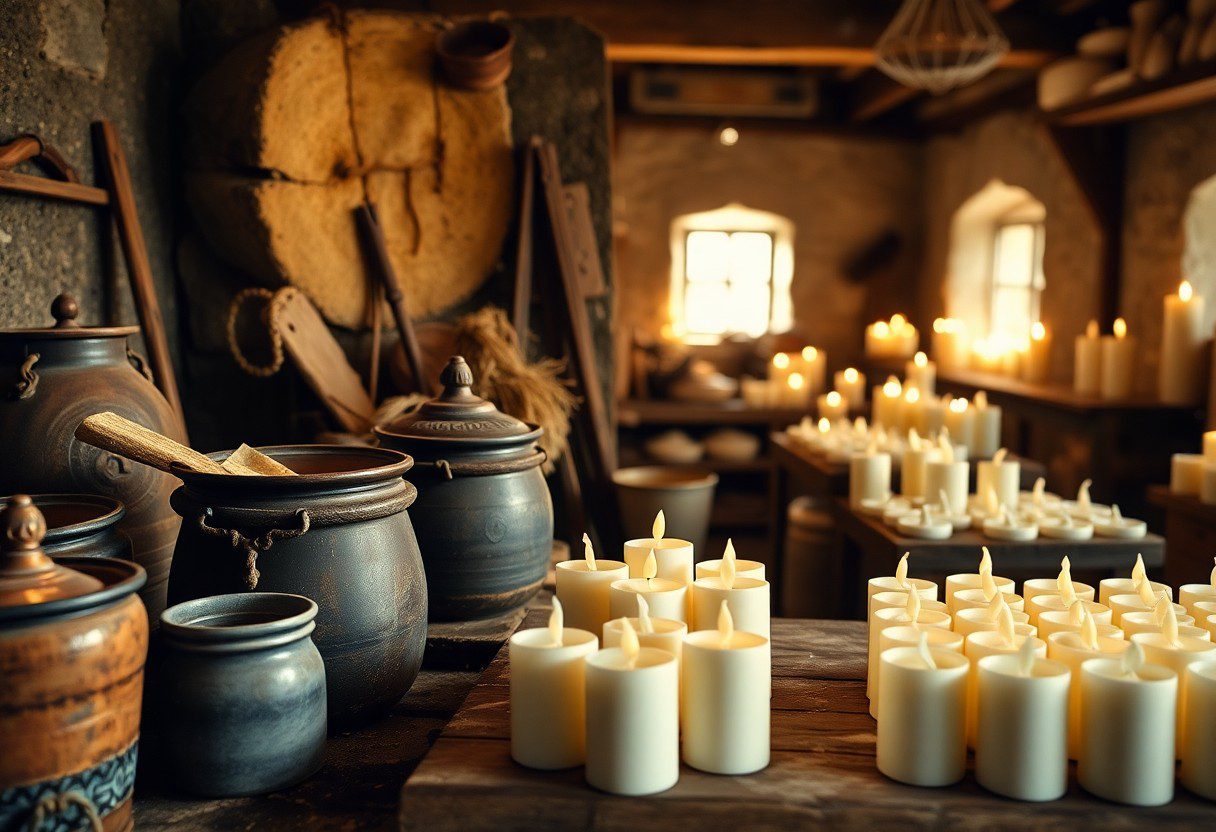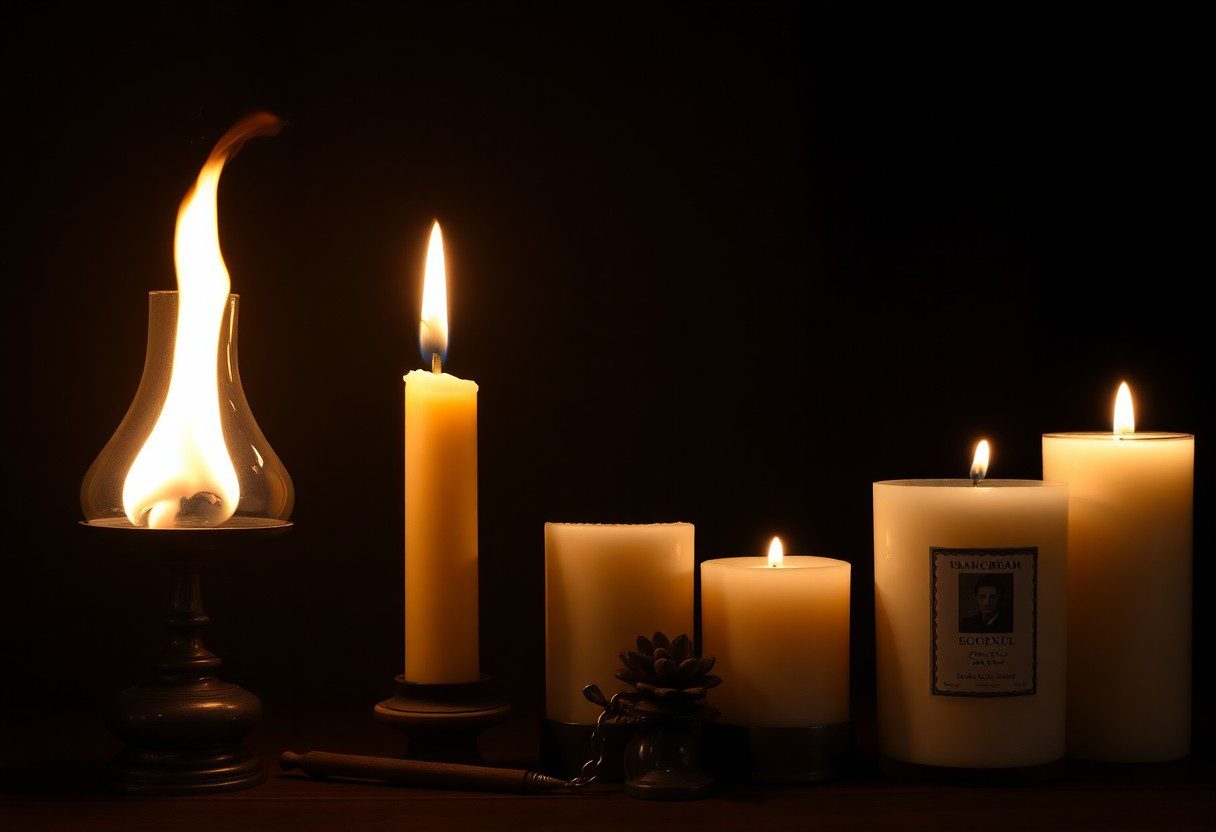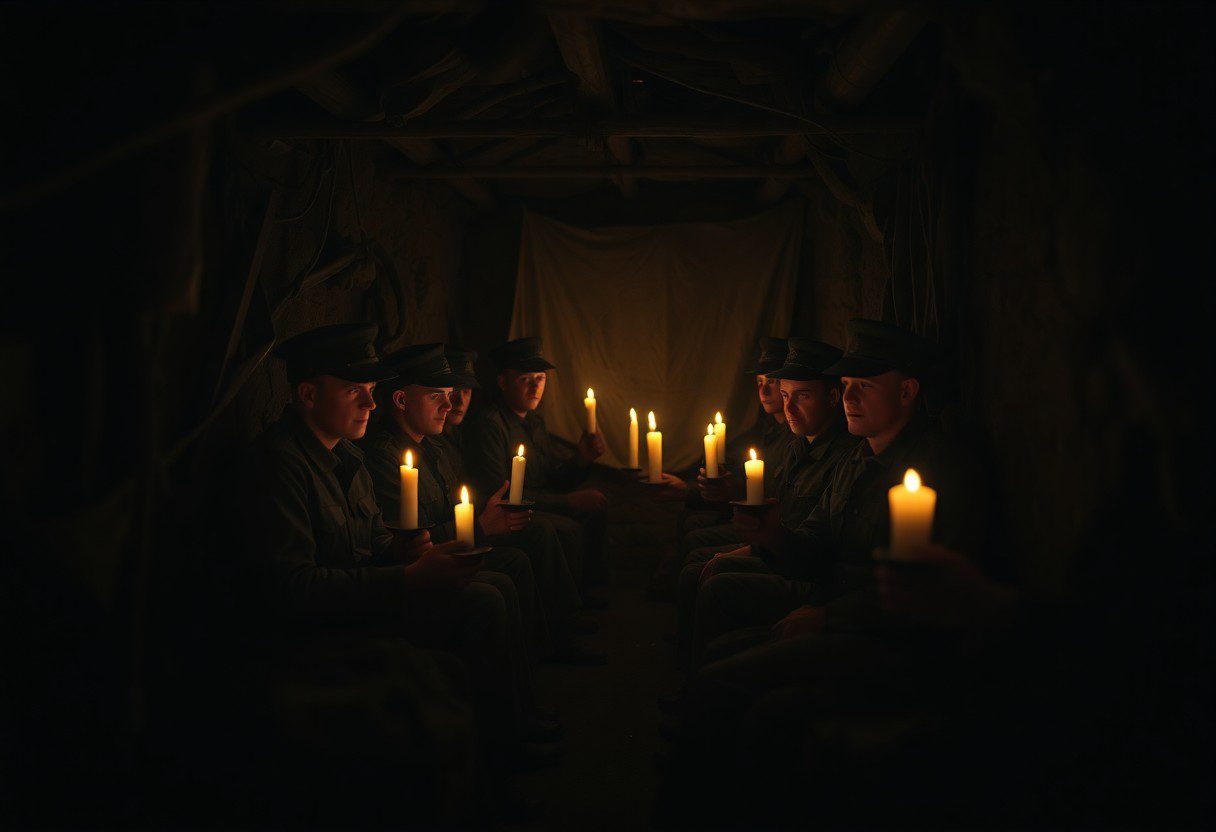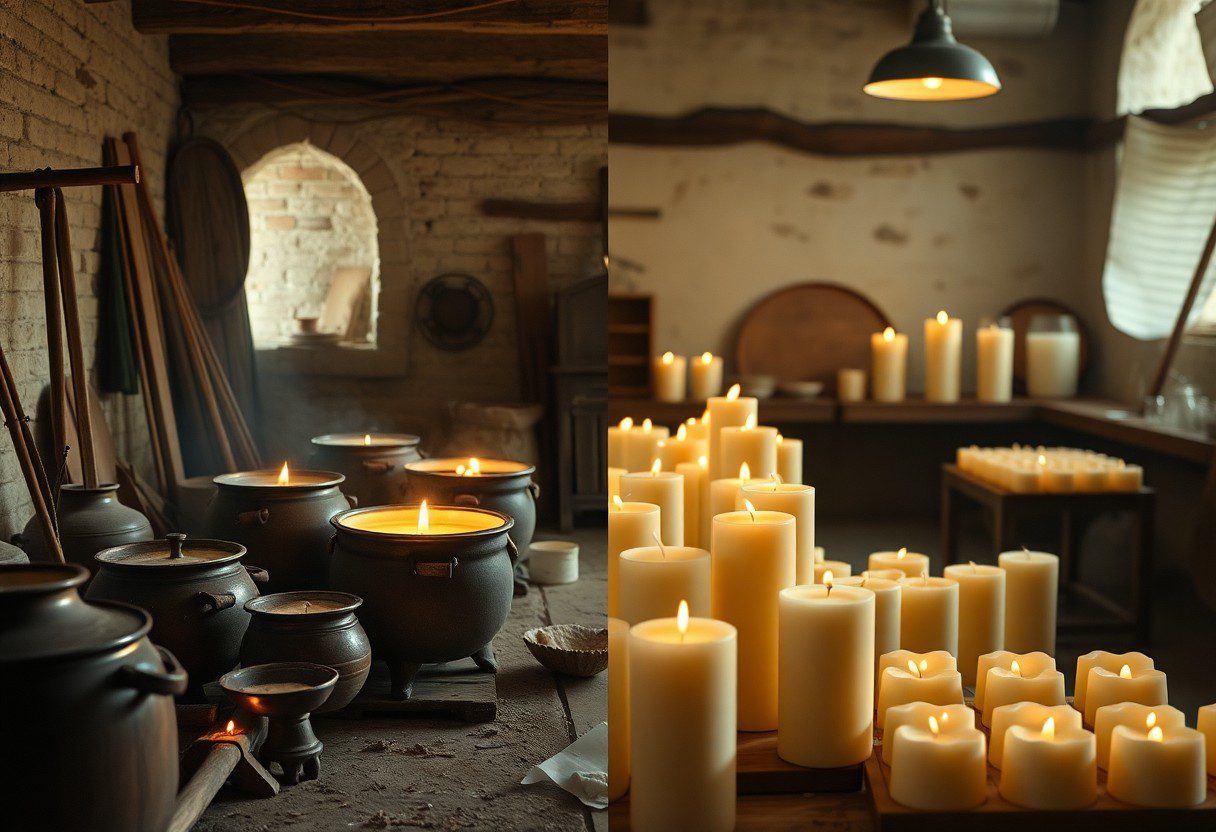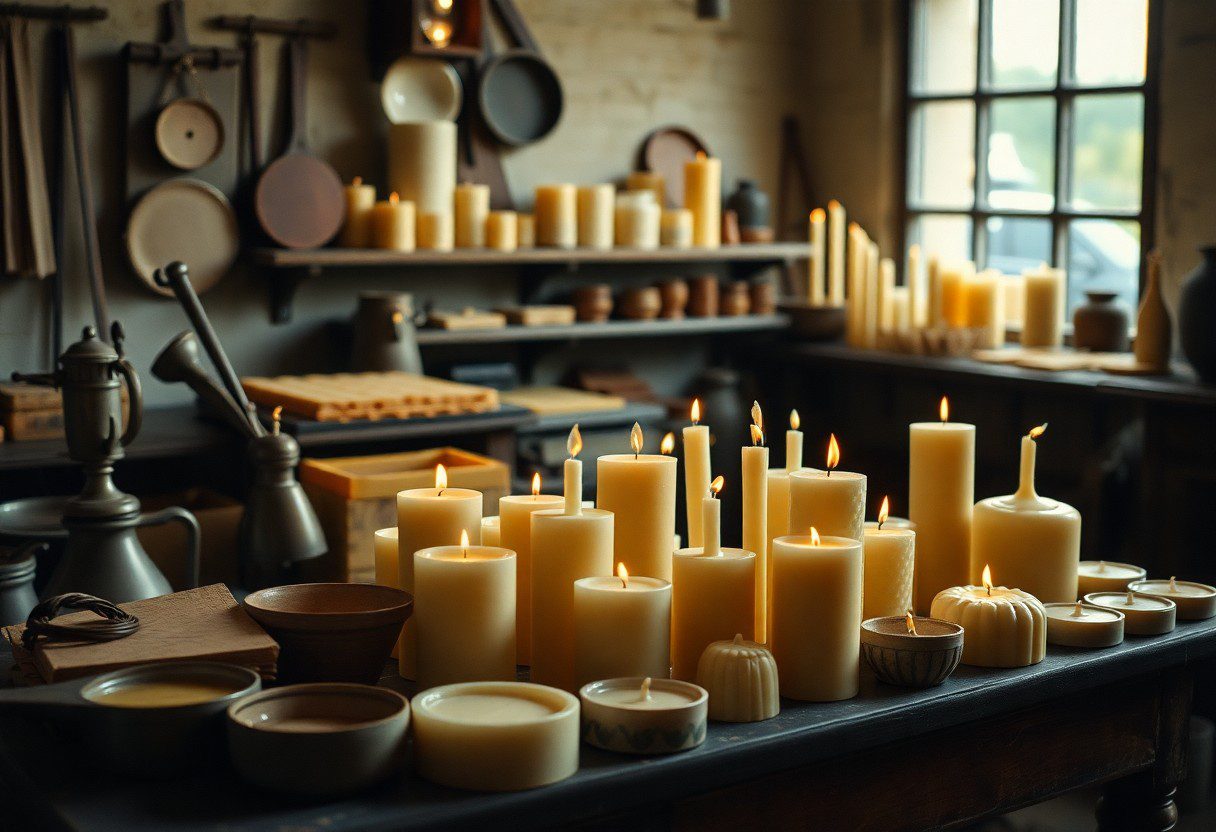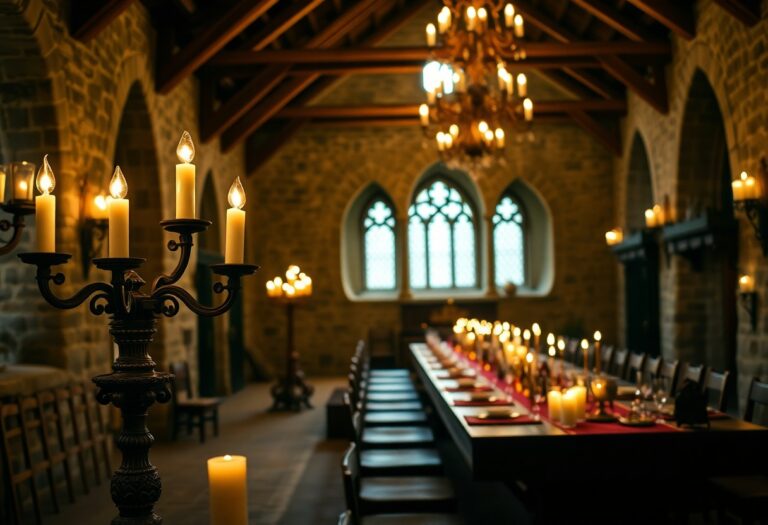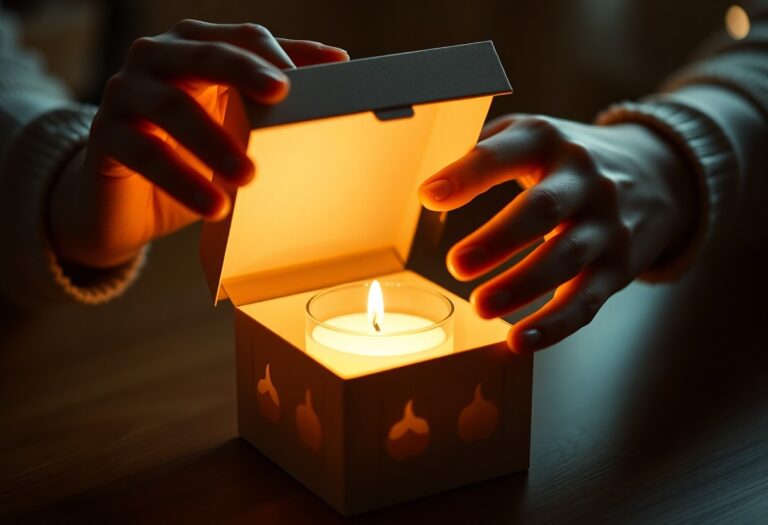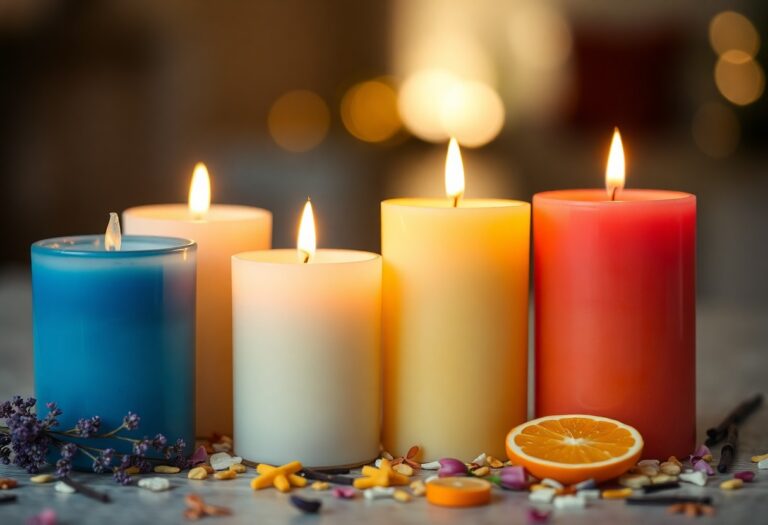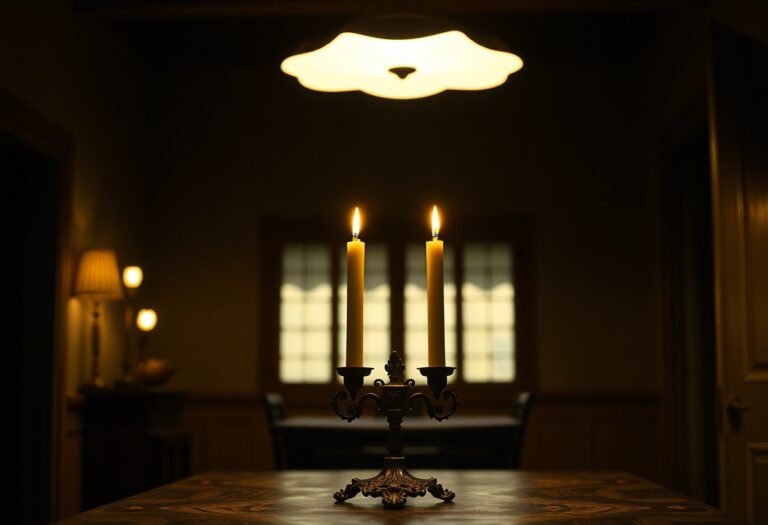From Tallow To Paraffin – The Journey Of Candle Making Through The Ages
Most people underestimate the rich history behind the candles you use today. You may not realize that candles have evolved from primitive tallow to sophisticated paraffin wax, reflecting changes in technology and culture throughout the ages. As you explore this journey, you’ll uncover the dangerous materials that early candle makers worked with, the innovations that made candles safer and more efficient, and the significant role they played in your everyday life—from lighting your home to setting an ambiance. Join us as we illuminate this fascinating transformation.
The Origins of Candle Making
To understand the journey of candle making, it’s vital to examine into its origins. The practice dates back thousands of years, with early examples found in various cultures around the world. Initially, candles served a practical purpose: they provided light in a time when darkness enveloped the world after sunset. This functionality made candles an indispensable tool for everyday life in ancient societies. As you explore this history, you’ll find that different regions developed their own unique methods and materials to create these intriguing light sources.
Ancient Civilizations and Tallow
Civilizations such as the Egyptians, Greeks, and Romans laid the groundwork for candle making. They primarily used resources readily available to them, such as animal fat, to craft what are known as tallow candles. These early candles were made by repeatedly dipping a wick into molten tallow, allowing each layer to cool before applying the next. While this method was effective, it often produced a smoky flame and created a foul odor during burning, which, despite its limitations, nonetheless illuminated the homes of countless individuals throughout antiquity.
The Role of Beeswax in Early Candles
The introduction of beeswax marked a significant advancement in candle making. The ancient Egyptians were one of the first cultures to utilize beeswax, recognizing its superior properties compared to tallow. Beeswax candles burned longer, produced a brighter flame, and emitted a pleasant aroma. Out of all the materials available, beeswax stood out for its quality and efficacy. This evolution in candle-making techniques signified a shift in not just functionality but also in the artistry of creating candles, as crafters began to experiment with shapes and molds.
Due to the natural process of bee honey collection, beeswax candles became more than just a source of light; they transformed into valuable commodities in various societies. Their clean-burning nature appealed to those who could afford them, making them a symbol of wealth and luxury. You’d find that throughout the Middle Ages, beeswax candles became vital in churches and important ceremonies, signifying respect and reverence. Thus, while tallow might have served the masses, beeswax elevated candle making to an art form, enriching cultures and rituals across the globe.
The Evolution of Materials
While the art of candle making has its roots in the use of natural materials, the evolution of candle-making materials has seen a remarkable transformation over the centuries. From the early days of using animal fats to create tallow candles, you can trace the progression through various materials that shaped how candles were produced, ultimately leading to the wide array of options available today. The journey from tallow to wax paved the way for new innovations in candle-making processes, allowing you to explore your creativity with different textures and fragrances. To investigate deeper into the art of candle making, consider checking out Making Candles – Discover Lewis & ….
From Natural to Synthetic: The Rise of Stearin
Along the way, the introduction of stearin marked a significant turning point in the evolution of candle materials. Derived from animal fats and palm oils, stearin was a *more stable* and *economical* alternative to traditional tallow. This innovation allowed for candles that burned more evenly and produced a brighter flame, enhancing the overall user experience. You may find that stearin candles also provide better fragrance retention, offering you a delightful aromatic experience during usage.
The Advent of Paraffin Wax
Stearin can be seen as a stepping stone that eventually led to the introduction of paraffin wax. Initially derived from the byproducts of petroleum refining, paraffin began to gain popularity due to its *versatility* and *consistency*. This material quickly became the preferred choice for both manufacturers and consumers, allowing for mass production of candles in a variety of shapes, colors, and scents. The use of paraffin wax not only decreased production costs but also made candles more accessible to the general public, marking a significant milestone in the candle-making industry.
Rise of paraffin wax also brought crucial *advancements* in safety. Unlike some earlier materials that produced significant smoke or unpleasant odors, paraffin has become recognized for its *cleaner burn*. However, it is imperative to note that although paraffin has its advantages, it is a *synthetic* material, which may raise environmental concerns for some consumers. As you navigate through candle-making options, it may be beneficial to consider both the benefits and the potential environmental impacts of the materials you choose for your creations.
Technological Advances in Candle Production
If you research into the evolution of candle-making, you’ll discover a fascinating journey marked by innovation and creativity. The development of materials and techniques over the centuries reflects the changing needs and desires of society. For an in-depth exploration, check out The History of Candle Making: From Ancient Times to Modern. As candle production transformed from a labor-intensive craft to a streamlined process, technological developments have played a key role in making candles more accessible and varied than ever before. This evolution has included the introduction of new materials, advanced manufacturing techniques, and the rise of mass production, which have all contributed to the modern candle market’s diversity.
Industrial Revolution and Mass Production
About the time of the Industrial Revolution, the candle-making industry saw a seismic shift thanks to advances in technology and production methods. No longer relying solely on local artisans, large-scale production became possible. Factories began to sprout up, enabling the manufacturing of candles in bulk. This change not only increased the availability of candles but also allowed for lower prices, making them accessible to a broader segment of the population.
Innovations in Candle Design and Fragrance
About the same time, creative minds began to experiment with candle design, allowing for a more personalized experience. You can now find candles in an array of shapes, sizes, and colors, catering to various tastes and home decor styles. Additionally, the introduction of synthetic fragrances expanded your options significantly; you can enjoy diverse scents ranging from seasonal aromas to unique blends. Innovations in candle technology not only enhanced the aesthetic appeal but also improved the burning efficiency of candles, making them a staple in homes and businesses alike.
Innovations in candle-making have led to an exciting array of options you can now choose from. Many candles come with features such as long burning times, clean wax blends, and even safety mechanisms for enhanced stability. Such advancements not only provide you with stylish options but also create a safer environment while you enjoy the warm ambiance they offer. Moreover, the integration of eco-friendly materials has become a significant focus, emphasizing your ability to make choices that are not only enjoyable but also environmentally conscious.
Cultural Significance of Candles Through the Ages
Despite their simple appearance, candles have always held profound cultural significance across the globe. They symbolize warmth, hope, and guidance, becoming integral to various customs and traditions. From ancient rituals to modern celebrations, the flickering flame of a candle can convey a sense of peace and reflection. In many cultures, the light of a candle has served as a beacon during times of distress and joy alike, highlighting the resilience of human spirits throughout the ages. Thus, when you light a candle, you participate in a timeless tradition that connects you to countless generations before you.
Religious and Spiritual Uses
Uses of candles in religious practices date back thousands of years, serving as symbols of divine presence and enlightenment. Whether lighting a candle in a cathedral or placing one in a shrine, the act is often seen as a form of prayer or meditation. You may find that different faiths incorporate candles differently, with some using them to signify the presence of the divine, while others may use them during rituals to celebrate important life events. The soft glow is not merely for illumination; it transforms space, inviting mysteries and spiritual experiences that invite introspection.
Candles in Celebrations and Traditions
Any cultural celebration you’re familiar with likely has a place for candles, as they embody collective joy and unity. From birthday cakes topped with flickering candles to the magnificent lighting of menorahs during Hanukkah, these moments symbolize birth, hope, and remembrance. During festivities, candles contribute to creating a vibrant atmosphere, enhancing both sight and emotion. As you partake in these traditions, the candle’s glow adds depth and meaning to your experiences, anchoring those special moments you’ll cherish.
Indeed, the heartwarming presence of candles during celebrations also extends their purpose beyond mere decoration. They evoke feelings of nostalgia and connection, emphasizing the importance of community and familial bonds. Lighting candles during significant events like weddings or anniversaries can serve as a way to honor your heritage, linking you to past generations. In this way, candles become symbols of your shared experiences, acting as a reminder of love and togetherness even amidst the hustle and bustle of life.
Modern Trends in Candle Making
Not only have candle making techniques evolved, but the trends surrounding this ancient craft have also seen a significant transformation. Today, the focus is not just on aesthetics or aromas, but also on the materials used and the processes involved in creating these delightful home embellishments. What was once a necessity for light has now flourished into a thriving industry where consumers are increasingly concerned about the sustainability and ethics behind their purchases. This shift has led to innovative practices that cater to a more conscious lifestyle, making you more aware of your choices when it comes to selecting the perfect candle for your home.
Eco-Friendly and Sustainable Practices
Below, you will find that eco-friendly and sustainable practices are dominating the modern candle making landscape. You may now find candles made from natural, renewable sources such as soy wax, beeswax, and various vegetable-based waxes. These materials are not only biodegradable, but they also produce fewer harmful emissions when burned compared to traditional paraffin wax candles. Many candle makers are opting for phthalate-free fragrances and non-toxic dyes, ensuring that your home stays free of pollutants while still enjoying the comforting ambiance that candles provide.
Artisanal and Handmade Trends
About the artisanal and handmade trends, you will notice a surge in popularity of candles crafted with care and individuality. This movement emphasizes personal touch and quality over mass production. You may find small batch producers focusing on meticulously sourcing their ingredients and creating unique blends that reflect artisanal craftsmanship. These candles often feature innovative designs, intricate molds, and customized scents, allowing you to select options that truly resonate with your personal style and preferences.
Practices like these offer you the chance to explore your creative side while supporting local artisans. As you browse through these handmade options, you will likely appreciate not just the aesthetics but also the stories behind each creation. The makers often share their inspirations, allowing you to connect with the product on a deeper level. By choosing artisanal candles, you are not only landing unique pieces for your space but also encouraging the growth of sustainable and ethical businesses.
Safety and Regulations in Candle Production
Unlike many other household items, candles require a thorough understanding of safety standards and regulations, both for producers and users. Candle production is subject to specific regulations that ensure products are safe for consumers. These guidelines cover everything from the materials used in candles to the labeling and testing of finished products. As a candle maker, it is important to stay informed about local and national regulations to avoid any compliance issues, ensuring that your candles can be sold without legal concerns and that you prioritize the safety of those who use your products.
Understanding Candle Safety Standards
To create candles that meet safety standards, you must be aware of various guidelines set forth by organizations such as the ASTM International and the Consumer Product Safety Commission. These standards outline key aspects such as wick size, burn time, and material safety to reduce the risk of fire hazards and toxic emissions when candles are burned. Thorough testing is important, as it ensures that your products adhere to these safety parameters, which can protect your brand and your customers.
Best Practices for Safe Candle Use
An important part of enjoying candles safely is knowing how to use them properly. Ensure you follow basic safety measures, such as placing candles on stable surfaces away from flammable materials, and never leaving them unattended while burning. Also, keep candles out of reach of pets and children to avoid accidental accidents. It’s beneficial to trim wicks to about 1/4 inch before lighting, as this minimizes soot production and promotes a cleaner burn.
Best practices for safe candle use can significantly enhance your experience while minimizing potential hazards. Always select candles made from non-toxic materials and pay attention to wax type and additives to ensure a clean burn. Position your candles in well-ventilated areas to diminish the accumulation of smoke, and extinguish them before they burn down to the bottom. Additionally, consider using candle holders designed to catch wax drippings and provide stability, as this enhances safety and prolongs the life of your candles. By following these guidelines, you can enjoy the ambiance and fragrance of candles without compromising your safety.
Final Words
The journey of candle making from tallow to paraffin not only highlights the evolution of materials used but also reflects the changing cultural and technological landscapes throughout history. You can appreciate how each advancement has contributed to the rich tradition of candle making, transforming it from a basic necessity into an art form cherished for ambiance, scent, and personal expression. Understanding this evolution allows you to connect more deeply with the candles you use today, as they are not merely objects but part of a long lineage of craftsmanship and innovation.
As you explore the various methods, materials, and techniques of candle making, you immerse yourself in a story that spans centuries. You gain a greater appreciation for the skill and artistry involved in creating these items, empowering yourself to perhaps even try your hand at making your own candles. Whether you choose to stick with traditional tallow, experiment with natural beeswax, or embrace contemporary paraffin, your journey into the world of candle making will surely be rewarding and enlightening.
Q: What materials were traditionally used in candle making before paraffin became popular?
A: Before the advent of paraffin wax in the 19th century, candle making primarily relied on natural materials. Historically, tallow, which is rendered animal fat, was commonly used, especially in Europe. Beeswax was also a favored option due to its clean burning properties and pleasant scent, though it was more expensive than tallow. In various ancient cultures, such as the Romans and Egyptians, beeswax was preferred for its higher quality, despite its cost. Other materials, such as bayberry wax, which was derived from bayberry shrubs, were also utilized but were less common.
Q: How did the introduction of paraffin wax change the candle-making industry?
A: The introduction of paraffin wax revolutionized the candle-making industry in the 1850s after its discovery as a byproduct of petroleum. Paraffin’s qualities, such as low melting point, ease of use, and cost-effectiveness, allowed for mass production of candles, making them affordable for the average consumer. Additionally, paraffin wax burned longer and produced a brighter flame compared to traditional materials like tallow. This shift led to an increase in both the variety and accessibility of candles, sparking creativity among artisans and a flourishing of candle-making as a commercial enterprise.
Q: What are the historical uses of candles beyond lighting and how have these uses evolved?
A: Historically, candles served multiple purposes besides providing light. They were integral in religious ceremonies, used for signaling in maritime activities, and served as timekeepers in households before the advent of mechanical clocks. Additionally, candles have been employed in various cultural rituals, such as celebrations and memorials. Over time, as electric lighting became prevalent, the role of candles shifted towards decorative and sentimental use, often seen in aromatherapy and home decor. Today, candles are appreciated for their ambiance, fragrance, and as a source of relaxation, marking a significant evolution from their original functional uses.
